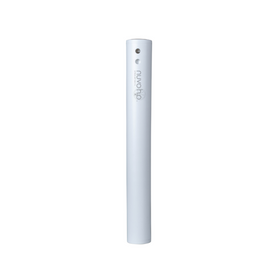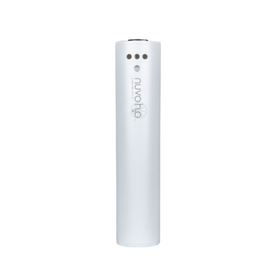
How to Prevent Sewer Backup at Home
Last Updated: Apr 9, 2025As you draw up the plans for your dream home, there are endless options in colors, patterns, features, and so much more. But don't forget to think about your home's less glamorous aspects, as the essential plumbing system.
A sound plumbing system effectively manages waste, carrying it off to treatment facilities, but all systems are subject to backup. Even the most sustainably-minded household contributes to sewage waste. This waste includes cleaning products, fertilizer, animal and human waste, pest control sprays, and landscape runoff, not to mention everything your neighbors are flushing out. When the pipes eventually do back up, all that yucky waste will reverse its flow, right back into your home. Now that's gross!
What's worse, as our climate changes, we see record-breaking storms causing monumental flooding and turning neighborhoods into temporary lakes and rivers. Natalia Moudrak is the Director of Climate Resistance at the University of Waterloo's Impact Centre. Moudrak says, "flooding is the biggest challenge" homeowners face when it comes to climate change. While we can't correct climate change overnight, homeowners can take precautionary measures to protect their homes and families from sewage backup.
Flooding Poses a Great Risk to Homeowners
Water under the bridge is a beautiful sight, but rising riverbeds and torrential downpours resulting in flooded basements (and whole homes) can do incredible damage. During significant flooding events, power is often knocked out, rendering regular sewage pumps utterly useless when they're needed most. Toronto homeowners saw an average of $43,000 in damages related to 2018 flooding.
And while plumbing systems are built with valves to turn the flow on and off, they can't do enough to hold backflow at bay. Even when closed, a valve is no match to high-pressure backflow and will probably leak or break entirely. Water pressure usually helps to prevent backflow on its own. It may fail when water is temporarily shut off, and pressure builds up, or even when a nearby fire hydrant is in use.
Table of Contents
- Why Do You Need a Backflow Preventer?
- How Much Do Backflow Preventer Cost?
- How Do You Choose a Backflow Preventer?
- Types of Backflow Preventers Available
- Choosing a Backflow Preventer
- What Is a Pressure Vacuum Breaker (PVB)?
- What Is a Reduced Pressure Zone (RPZ)?
- What Is a Double Check Assembly (DCA)
- A Backflow Preventer Will Make Your New Home More Resilient
Why Do You Need a Backflow Preventer?
A backflow preventer is an additional measure required by law in many municipalities to prevent sewage from reversing its flow back into your home during pressure build-ups and flooding events.
Nobody wants sewage ever to reverse its path back into the home, but the fact is there are "over 10,000 reported cases of backflow contamination each year." Installing proper backflow prevention measures will stop backflow in its tracks, protecting your home and potable water from potentially dangerous situations.
How Much Do Backflow Preventer Cost?
The backflow preventer itself is only about $100 to $200—it's the installation that can vary widely and is considerably more costly in a retrofit. A sound backflow prevention system can cost upwards of $3,000 to retrofit an existing home. But when building a new home, the installation can be as affordable as $400. A backflow preventer is a precious addition to any new home build.
How Do You Choose a Backflow Preventer?
Your local building regulations and your home's physical location will determine your course for choosing the right backflow preventer. Before you begin building your house, take a walk around the neighborhood and pay attention to the closest maintenance holes' placement to your soon-to-be front door. The plumbing fixtures in your home, including toilets, sinks, sprinklers, and pipes, should drain down to the maintenance hole. If you're installing a basement where you might place your laundry machines or have an extra bathroom, topography doesn't often agree. Your closest maintenance hole may be upstream.
Hiring an experienced plumber is essential. A professional will be able to help you navigate the intricacies of building codes and plumbing regulations. They can help determine what type of backflow preventer you may need and where to install it properly.

Types of Backflow Preventers Available
First, you'll want to start with your backwater valve. There are two standard valves: normally open and normally closed.
These values are available in four types.
Choosing a Backwater Valve
- Type 1: These valves are installed with horizontal pipes, including drains and sewers, and can be buried up to 24 inches deep.
- Type 2: These valves are essential for floor drains, like those placed in basements and showers.
- Type 3: Valves used in vertical pipes.
- Type 4: Like Type 1 valves, these backwater valves are used in horizontal piping but are extendable and allow for deep burying.
Your chosen backflow preventer should be installed immediately following the installation of a valve, where it is necessary. Again, your plumber will help you understand where a backflow preventer is needed and which kind will work best based on your local regulations.
Choosing a Backflow Preventer
There are three conventional backflow preventers, but keep in mind that not all municipalities allow all three types. Some cities may have regulations in place that outlaw one, while others may define which backflow preventer you should install. Your plumbing expert will help you make the right decision.
What Is a Pressure Vacuum Breaker (PVB)?
The pressure vacuum breaker (PVB) is the most common and inexpensive option in installing a new backflow preventer. These are easy to install, maintain, and repair, making them an incredibly sustainable backflow management choice.

The PVB "is an accessory placed on a faucet valve, toilet or flush valve that prevents the reverse flow" of dirty water from getting into the potable water reservoir. If you live in a climate subject to winter freezing, look for a PVB with built-in freeze protection, and be sure also to protect your pipes in the process.
PVBs do, on occasion, eject water, so when installing in spaces inside your home, choose a spill-resistant PVB. Many areas where back-pressure is a threat do not allow PVBs, so again, check those building codes!
What Is a Reduced Pressure Zone (RPZ)?
The reduced pressure zone (RPZ) is the most complex and expensive of backflow preventers and the most secure and reliable option. These heavy-duty backflow preventers work hard to stop backflow in their tracks, protecting against harmful contaminants. Because of their hard-working nature, they are the top choice in commercial buildings, hazardous sewage like hospitals, and morgues.

RPZ may be the safest and smartest backflow prevention choice for your new home, farming on your property, or using pesticides for things like pest control or fertilizer. Do keep in mind that building codes are incredibly variable on RPZ. Ask your expert team to help you make this decision before moving forward.
What Is a Double Check Assembly (DCA)
The double check assembly (DCA) is the most common backflow preventer for underground and indoor installations. DCA is also the only backflow prevention option you safely install in a contained valve box below the ground. DCA effectively protects against both beck-siphonage and back-pressure and offers extreme versatility in installation both above and below ground.

A Backflow Preventer Will Make Your New Home More Resilient
In the face of growing climate change concerns, backflow preventers can be a lifesaver. They protect your potable water from sewage reversal and make your home more resilient. Together, backflow preventers and backwater valves will also protect your home from dangerous flooding situations (that do incredible damage to your foundation, walls, and beams).
While laws in many areas require backflow preventers, each municipality sets its strict guidelines on which type of backflow preventer you can safely install. Some cities require aboveground installation, while others may significantly limit your options to the safest available for your sewage systems and weather patterns. Talk with your construction team and expert plumber to help you understand your city's building codes for backflow prevention. Don't forget to talk about any permits that may be required as well as incentives available.
Laura Bourland
Laura grew up in the California suburbs, far removed from environmentalism, but nature always has a way. She uprooted her life in 2015, moving to the countryside of Washington to live a more sustainable and simple life on 12 acres. She and her fiancee are learning on the job as they attempt everything from gardening and natural pest control to eco-friendly building and home improvement.










